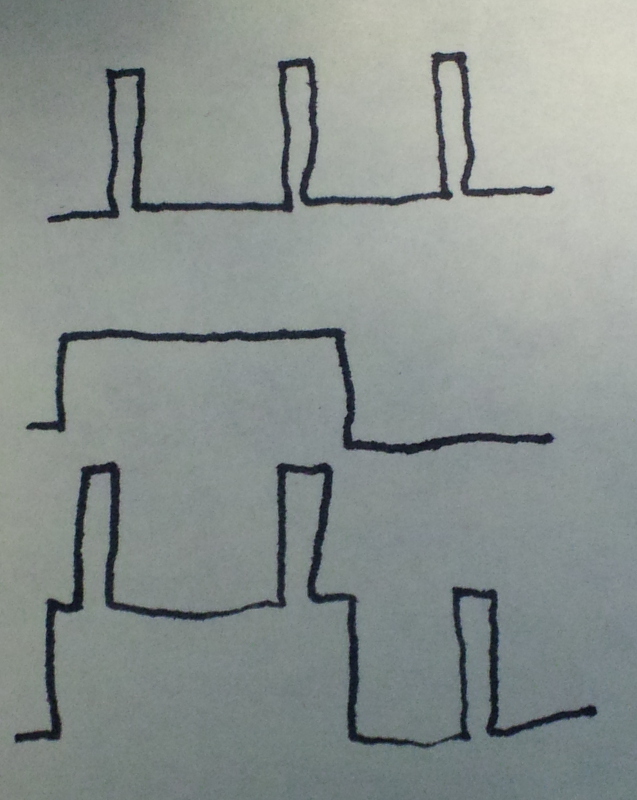Thought maybe some of you brainy types would review my audio design concept for my Repair Shop structure and give me a “thumbs up” or a “thumbs down”. I am more of a digital guy and all this analog stuff makes my head spin. All comments appreciated.
There are two speakers in the structure, one in the machine shop area and the other in the blacksmith forge area. Each speaker is rated at 8 Ohms, 3 Watts. I have three separate audio input devices. Two are monaural sound effects generator boards – one for shop machinery and one for blacksmith sounds. These are both HQ sound modules from ITTP. http://ittproducts.com/products.html The third audio input is a stereo MP3 player called a MP3 Trigger from Sparkfun Electronics. It plays any one of 18 audio tracks contained on a micro SD card. https://www.sparkfun.com/products/11029 I have recorded 1939-era music on the card including songs from Glenn Miller, Judy Garland, Artie Shaw, and the like. There is a group of figures in the structure taking a break, sitting around the shop heater, and listening to an old 30’s style radio.
My objective is to play the machinery sound effects through the machine shop speaker, the blacksmith sound effects through the blacksmith forge speaker, and the MP3 Trigger audio tracks through both speakers. A simple control panel has toggle switches to set the sound effects cards to off, to play one time (about 60 seconds), or to loop continuously. Eighteen momentary push button switches will allow any of the 18 pre-recorded audio tracks to be played. I probably will not play sound effects and music simultaneously, but could if I wanted to.
The four outputs from the three audio devices will go into a mixer circuit. The mixer combines the machinery sound effects with the left channel from the MP3 Trigger and the blacksmith sound effects with the right channel. The left and right outputs from the mixer will feed two identical audio amps. Each amp will drive one of the speakers.
The HQ sound modules have speaker outputs so I need to convert these to line level inputs for the mixer. I plan on using a resistor divider network with a 10K and a 1K resistor in series to ground. I will tap the junction between the two resistors to get the line level input. I thought about making the 1K resistor a pot for level adjustment, but the HQ board already has a volume pot onboard so this will not be needed.
The MP3 Trigger has differential line outputs designed for driving headphones. I plan on converting the differential outputs to ground referenced outputs with a resistor/capacitor network.
The four separate audio line inputs will capacitor couple into a LM3900N. This is an old 70’s - 80’s vintage op amp chip containing four independent Norton current amplifiers (very different from typical voltage amplifying op amp chips.) Two of the amplifiers will mix the left channel and the other two will mix the right channel. The left and right outputs from the 3900 will each capacitor couple into two simple audio amplifiers based on the LM386N op amp chip, with a gain of 20. Each audio amp will output about 1 Watt. The entire system will operate on 12 VDC and be contained on 3 IC chips with about 20 total resistors and 10 total capacitors (not counting the 3 commercial circuit boards.) Here is a block diagram:

What do you think? Will it work? Am I crazy?
Forget the last question … I already know the answer.
Thanks,
Bob


